Adam Byatt opened Trinity in 2006, having previously run a restaurant called Thyme in Clapham. Trinity gained a Michelin star in the 2017 guide. The attractive ground floor dining room has an open kitchen and the restaurant is set back from the street, a short distance from Clapham Common. The menu offered four courses at £60, with plenty of options at each course.
The wine list had 329 labels and ranged in price from £31 to £1,500, with a median price of £90 and an average markup to retail price of 2.9 times, which these days in London counts as something of a bargain. There were even four rather grand bottles below their current market value. Although 56% of the list was French there was plenty of choice from further afield, with offerings from Hungary, England and Argentina for example. Sample references were Turbiana I Frati Cà dei Frati Lugana 2020 at £48 for a bottle that you can find in the high street for £21, the excellent Estate Argyros Assyrtiko 2020 from Santorini at £70 compared to its retail price of £29, and Ribera Sacra 'Bastarda' Fedellos do Couto 2019 at £85 for a wine that will set you back £35 in the high street. For those with the means there was Château Beaucastel Châteauneuf-du-Pape 2008 at £196 compared to its retail price of £73, and Biondi Santi Brunello di Montalcino 2015 at £370 for a wine whose current market value is £139.
The meal began with some Parmesan biscuits, which were simple but nicely made, with good Parmesan flavour and had pleasant texture. These were followed by a further amuse-bouche of pumpkin beignet with truffle honey, pickled squash, crispy sage and fresh black truffle. The warm centre of the beignet nicely amalgamated the sweetness of the squash with the sourness of the vinegar from the pickled squash (15/20 canapes). Sourdough bread was made in the kitchen, apparently from a fifteen-year-old starter yeast. This was served warm and had pleasant texture. Beef tartare was unusual, a pretty cylinder shape garnished with Oscietra caviar from Attilus, a reasonable quality of caviar supplier. The beef lacked any obvious peppery or spicy bite but instead had a quite sharp vinegar taste. In principle this could work but the sourness rather overwhelmed the beef rather than balancing it, and the lack of peppery kick meant that the brininess of the caviar also lacked a counter balance. This was an interesting dish but didn't entirely work for me (14/20). It was still better than the rather sparse game gallantine that my dining companion tried: this was mostly chicken, filled out with a little partridge and other game, garnished with a fig and other autumn fruit.
A tartlet of crab with spiced squash and squash blossom was enjoyable, the crab fresh and the gentle Indian spices working well with the shellfish and the sweetness of the squash (15/20). I preferred this to my companion’s decent but simple cod dish with clams, sherry and saffron. We shared a dish of Sussex fallow deer cooked in brioche, with confit chestnuts, quince, chervil root puree and salsify. The venison was cooked for too long, so instead of being medium rare or even medium and was heading worryingly towards well done. The brioche coating around the venison didn’t really add much in the way that a pastry case might have done, and in some ways the best element of the dish was the salsify (13/20).
Better was a nicely made apple tart tatin. The pastry was quite good and the apples were caramelised nicely, but the pink lady (an Australian apple) fruit didn’t quite have enough tartness to properly balance the sweetness. It was still an enjoyable tatin, but for me would have been so much better if made with a sharper apple, such as Cox’s Orange Pippin (14/20). Why in peak English apple season would you use an Australian apple? Coffee was just the basic Nespresso choice, which seems a little lazy to me. Why not at least use the premium Nespresso Kilmanjaro blend, even if you were not going to opt for a speciality coffee? We had tea instead, which came with a nice lemon madeleine. Service was good throughout, with a nice waitress from Nottingham and a helpful sommelier. The bill came to £140 a head including wine. If you shared a bottle of modest wine then a more typical cost per person might be £95 or so with coffee and service. This was a pleasant enough experience, and I liked the menu, the atmosphere of the room and the staff. However, there were minor issues with several dishes, and there was an opportunity to improve sourcing in a number of elements. I would hope for a rather more consistent experience from a starred meal at this price point.
Further reviews: 28th Aug 2010















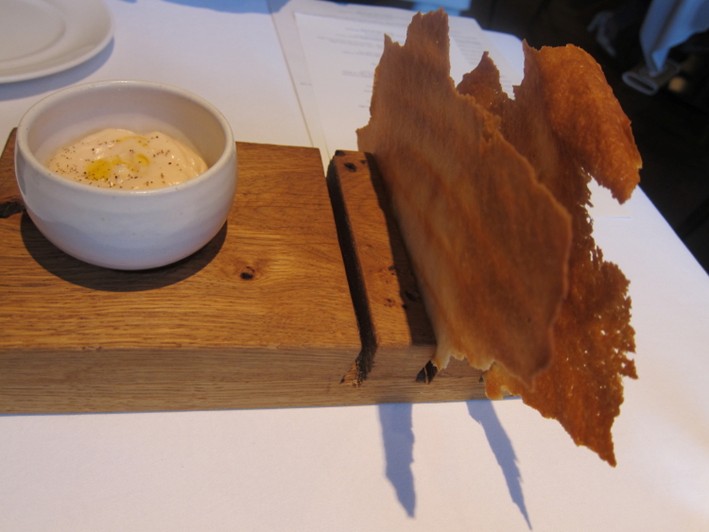
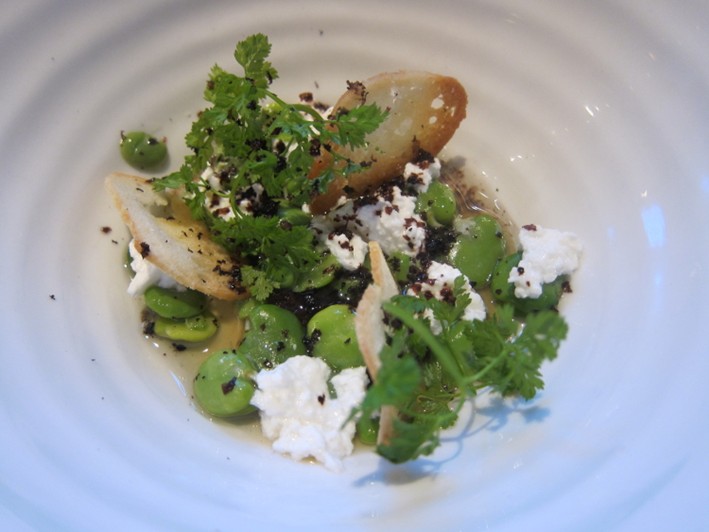

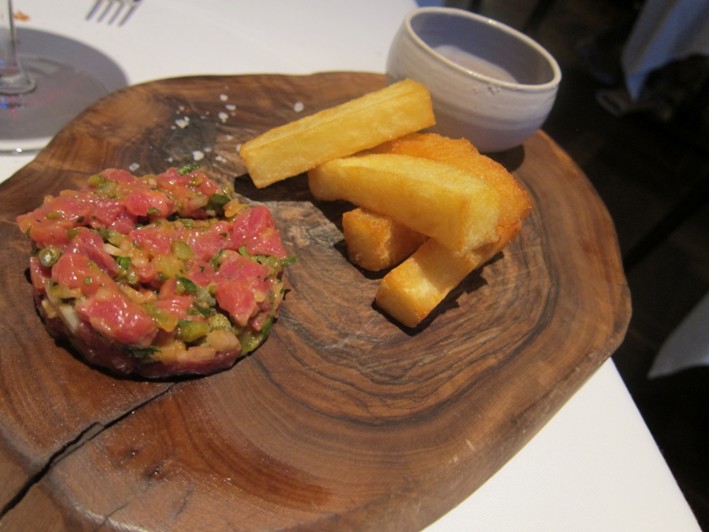
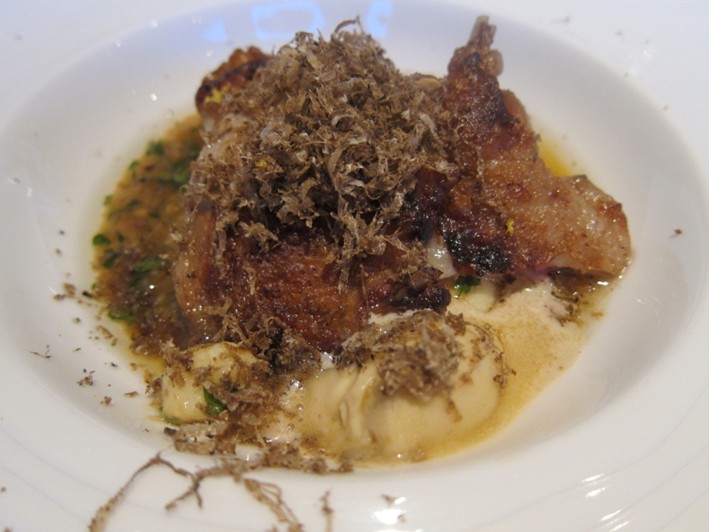


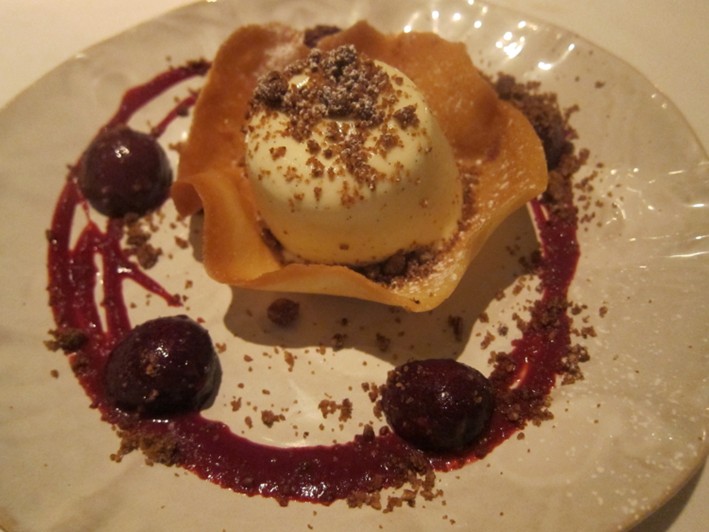

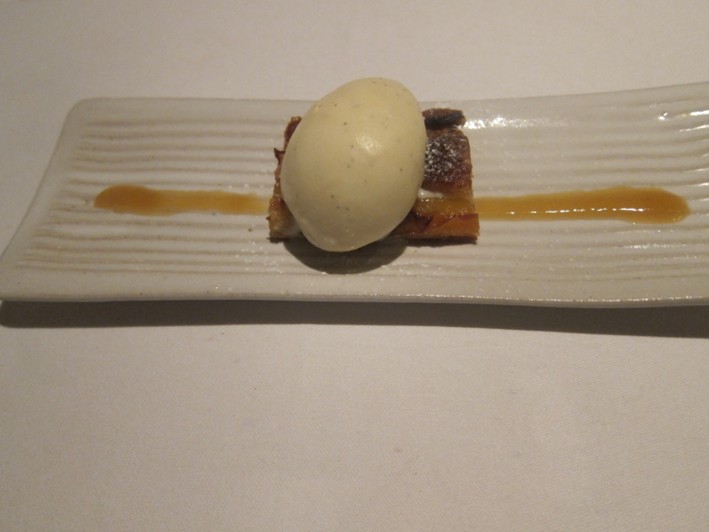


Add a comment
Thank you for submitting your comment, this will be checked and added to the website very soon.
User comments